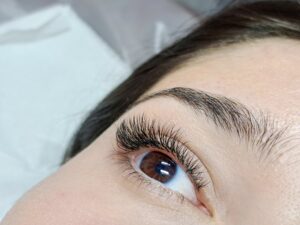Liquid Nose Job vs Rhinoplasty Surgery: Which One to Choose?
Are you unhappy with the appearance of your nose? Do you feel self-conscious because of its shape or size? If so, you might be considering a nose job to reshape the nose and enhance your facial features. But before you make a decision, it’s important to understand the differences between traditional surgical rhinoplasty and the newer non-surgical alternative, liquid rhinoplasty.
What is a Liquid Nose Job?
A liquid nose job, also known as non-surgical rhinoplasty, is a cosmetic procedure that uses injectable fillers to reshape the nose without the need for incisions or general anesthesia.
How does Liquid Rhinoplasty or “Liquid Nose Job” Work?
During a liquid rhinoplasty, a plastic surgeon injects a filler, such as hyaluronic acid, into particular areas of the nose to smooth out any bumps, correct asymmetry, or alter the shape of the nostrils or the bridge of the nose.
What are the Pros and Cons of a Liquid Nose Job?
The main advantage of a non-surgical nose job is that the procedure doesn’t require any incisions or general anesthesia, so there’s less downtime and recovery time than with traditional rhinoplasty. Plus, the procedure is generally less expensive than surgical rhinoplasty. However, keep in mind that these changes are only temporary and will need to be repeated after a few months or a year, depending on the filler used.
What is the Recovery Time for a Non-Surgical Nose Job?
The recovery time for a non-surgical nose job is significantly shorter than for surgical rhinoplasty. Patients may experience some bruising or swelling, but they can usually return to work or other activities the same day or the next day after the procedure.
What is Rhinoplasty?
Rhinoplasty, also known as a nose job, is a surgical procedure designed to reshape the nose and improve its appearance. This procedure involves making incisions in the cartilage and bone of the nose to reshape its structure and alter the shape of the nostrils and the bridge of the nose.
How does Surgical Rhinoplasty Work?
Surgical Rhinoplasty is performed under general anesthesia. The surgeon makes an incision either inside the nostrils or across the columella (the strip of tissue separating the nostrils), exposing the bone and cartilage that support the nose. The surgeon then sculpts the bone and cartilage to reshape the nose, creating a more pleasing appearance. The procedure takes 1-2 hours, and after it’s done, a splint will be put on the nose to help it maintain its new shape while it heals.
What are the Pros and Cons of a Surgical Nose Job?
One of the main benefits of surgical rhinoplasty is its ability to produce significant, permanent changes to the appearance of your nose. The surgeon can reshape the cartilage and bone to improve the symmetry, correct a crooked nose or a small bump, or even narrow the nostrils. But, keep in mind that as a surgical procedure, rhinoplasty requires downtime for recovery and may involve risks and the potential for complications.
What is the Recovery Time for Surgical Rhinoplasty?
The recovery time for surgical rhinoplasty can vary depending on the extent of the procedure, but patients typically need 1-2 weeks off from work or school to recover. The nose may remain swollen and bruised for several weeks after the surgery, so patients need to take extra care to protect their nose from any accidental bumps or impacts.
Rhinoplasty vs Nose Job: What’s the Difference?
Rhinoplasty is a type of nose job. So, the terms “rhinoplasty” and “nose job” are often used interchangeably. However, it’s important to distinguish between surgical and non-surgical nose jobs when discussing the potential treatments.
What is the Difference Between a Surgical Nose Job and a Liquid Nose Job?
The main difference between surgical and non-surgical rhinoplasty is that surgical rhinoplasty involves incisions in the nose and shaping the structures inside, while non-surgical rhinoplasty using dermal fillers to change the shape of the nose.
How to Decide Which Procedure is Right for You?
The decision on which procedure is right for you depends on your goals and expectations. If you want to make permanent changes to your nose’s shape, breathing problems, or corrects asymmetry, surgical rhinoplasty may be the most appropriate option. However, if you want to make small, temporary changes to the appearance of your nose without going under the knife, then non-surgical rhinoplasty may be a good alternative.
*Information in this article is not medical advice and may not be factually accurate. It is intended for entertainment purposes only. Consult with a physician before attempting any tips in this blog post and to get the most up to date factual data about any procedure or treatment.














